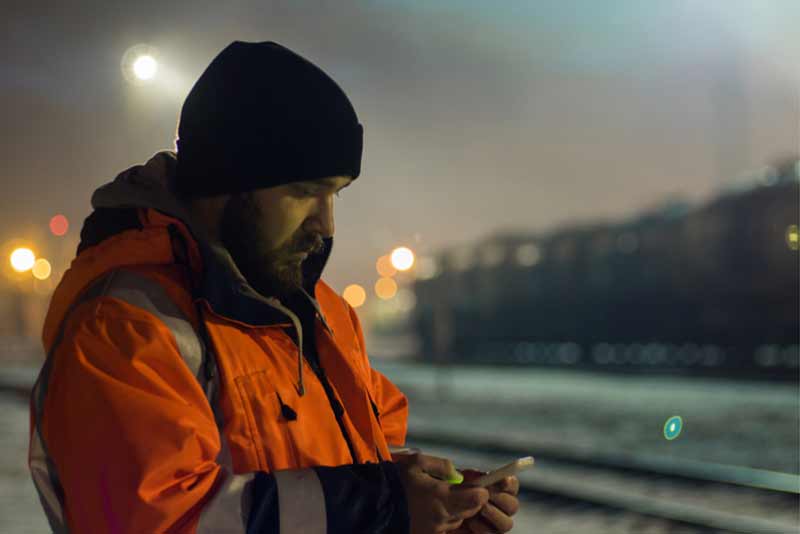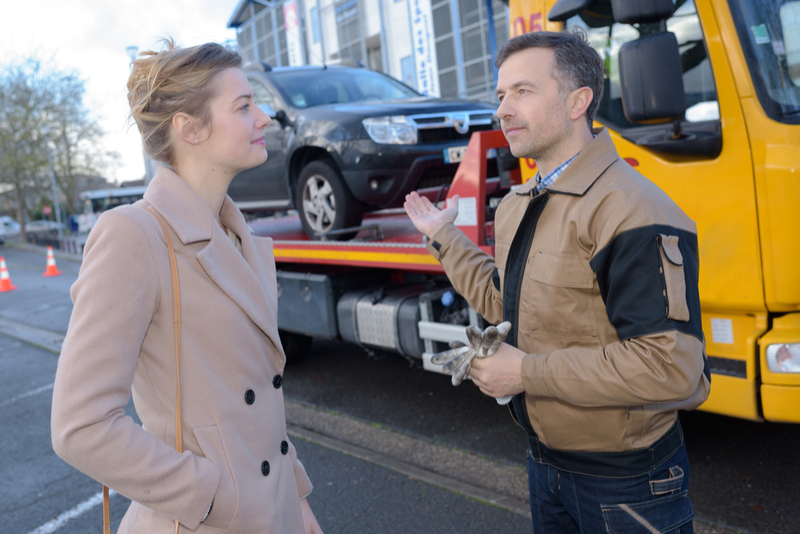How to ensure safety for roadside recovery workers
If your employees carry out roadside recovery for either private or commercial vehicles, then it is vital that your business is aware of the health and safety risks they face when working on the roadside. The HSE (Health and Safety Executive) also dictates that employers are responsible for taking the necessary steps to prevent any hazards they have identified. These include anything that could harm the health, safety and well-being of their employees in the workplace. However, this also extends to anyone else that may be affected by their business.

The most obvious risk facing roadside recovery workers is that they could be struck by moving vehicles. Another major concern is that the vehicles they are recovering may cause further road traffic accidents (RTAs). According to statistics from HSE on Roadside Recovery and Repair (RRR), three out five serious motorway accidents involves a broken down vehicle on the hard shoulder. One trade association also estimates that out of around 5,000 roadside recovery technicians, there are typically 6-8 fatalities each year. Sadly, it is also estimated that one roadside recovery worker is killed every two months in Britain.
In addition to RTAs, other health and safety hazards roadside recovery workers may face is injury from using unsuitable equipment to repair vehicles and prolonged exposure to adverse weather conditions.
These include extremely high or low temperatures, heavy rain, wind, ice and snow. This increases the risk of slips, trips and falls and puts RRR technicians exposed to these conditions at risk of developing heatstroke and a range of cold stress conditions. Hypothermia, trench foot and frostbite are all serious risks that need to be prevented in the winter months.
The fight for increased protection of roadside workers
In terms of the increased risk of road traffic accidents, organisations and businesses have been fighting for UK Parliament to address the dangers that RRR workers face in their day-to-day work. In December 2017, it was reported that Allianz Worldwide Partners UK were aiming to raise awareness of this issue by urging people to sign a petition. The aim was to encourage new rules to be introduced for motorists who encounter an accident on the road.
The petition called for it to be a legal requirement for drivers to reduce their speed and move over to a safe distance away from any vehicles that have broken down or been involved in an accident on the road. Although the petition gained over 11,000 signatures, the Government responded by saying they consider that “there is robust regulation in place that includes provisions for the safety of workers on the roadside, including roadside recovery drivers.” This petition failed to reach the 100,000 signatures it needed to be considered for debate in Parliament, and was closed in April 2018.
However, in February 2019, it was announced that concerns over roadside recovery technicians’ safety had been highlighted in Parliament with the launch of the Professional Recovery Operators Federation (PROF). As Gareth Johnson, MP for Dartford, explains in a post on his official website, the organisation was formed due to the success of the campaign for Safer Roadside Rescue and Recovery. PROF hopes “to provide a forum through which the industry can effect positive change” in regards to the safety of roadside recovery workers.
The campaign for Safer Roadside Rescue and Recovery was launched by the Dartford-based company Dynes Auto Services after one of their employees, Steve Godbold, was tragically killed when working. This incident occurred when he was carrying out a roadside recovery on the M25 in September 2017. To protect other employees, the campaign called for recovery workers to be able to display prominent red lights when attending to an accident or breakdown, rather than the amber lights they’re currently able to use. It also called for the Government to halt the roll out of All Lane Running smart motorways. As the CSRRR website explains, this is a type of smart motorway where the hard shoulder is converted into a standard lane for drivers to use.
Dartford MP, Gareth Johnson, said of the campaign and launch of the Professional Recovery Operators Federation: “The people who carry out this work are placed at significant risk when recovering vehicles at the roadside, particularly on motorways. If a red light would help make it clearer that a recovery is taking place, I would support this small change which could dramatically reduce the chances of death or serious injury.”

How to protect roadside recovery workers
As the statistics and calls for change show, roadside recovery can be a dangerous job. This means that you, as an employer, should be doing everything you can to meet your legal and moral obligations to protect RRR workers. Below, we’ve outlined the key things that will help you ensure their safety when working at the roadside:
Supply employees with protective workwear
HSE identifies personal protective equipment (PPE) as being one of the key ways of protecting workers in roadside recovery. PPE includes protective clothing, footwear, gloves, and head and eye protection.
When working at the roadside, it’s vital to be visible to passing motorists to prevent the chance of you being involved a collision. Therefore, you should provide your RRR workers with suitable high visibility workwear. In the UK, any high visibility garments you supply to your employees must comply with the EN20471 Standard for High Visibility Clothing, and they should be comfortable and lightweight so that they don’t restrict movement. The Personal Protective Equipment at Work Act 1992 also outlines that this workwear must fit the employee correctly.
As well as ensuring that any protective garments and PPE issued to your employees comply with these guidelines, high visibility clothing should be suitable for various seasons. In winter conditions, such as heavy rainfall, ice and snow, these garments must be waterproof and able to keep your workers warm enough to prevent cold stress conditions. Providing workers with suitable footwear will also eliminate the risk of slips, trips and falls. This is one of the most common accidents in all workplaces.
Maintain protective workwear and equipment
In terms of safety workwear, it isn’t just enough to issue it to your workers and enforce that they must wear this when working at the roadside. A vital aspect of ensuring high visibility garments are effective is maintaining them. This means they should be regularly laundered to remove soiling from mud, dust and other dirt that can dim the brightness of the reflective material. When laundering these garments, using an industrial laundering service will ensure that the high visibility and waterproof properties are preserved so that they last for longer. If tears, rips, burns, and other damage has been caused to safety workwear, make sure this is repaired or replaced as soon as possible.
Roadside recovery vehicles and equipment used during the recovery process must also be maintained to a certain standard to ensure the safety of your employees. HSE outlines the following guidelines for businesses and organisations: “all machinery, plant, equipment and tools used at work are subject to the requirements of the Provision and Use of Work Equipment Regulations (PUWER)” and this includes recovery vehicles. This dictates that equipment must be suitable for its intended use, is maintained in an efficient state and is regularly inspected for deterioration. Workers must also be adequately trained on how to use this equipment.
Provide workers with training and guidance
One of your duties as an employer of workers in all industries and professions is to provide them with suitable health and safety training. You must educate them on the risks and the precautions they must take to prevent them (including how to follow emergency procedures). Each and every worker should be provided with the same level of information and training. This is because although health and safety law dictates it’s the employer’s primary responsibility to ensure staff safety and well-being, employees also have a duty to care for their own health and safety. Additionally, they need to protect the health and safety of others that may be affected by their work. For roadside recovery workers, this is advising occupants of casualty vehicles on any precautions they should be taking.
In terms of training, this should be delivered during working hours and not paid for by employees. This training can be delivered by the employer or by external trainers. HSE advises using the following trade associations within the breakdown and recovery industry for guidance on training courses:
It is vital to ensure the health and safety of roadside recovery workers. At phs Besafe, we offer high visibility workwear supply and rental options, as well as an industrial laundry service to prolong the life of these protective garments. Check out our Bright Gear and Glow Gear ranges or contact us to find out more.